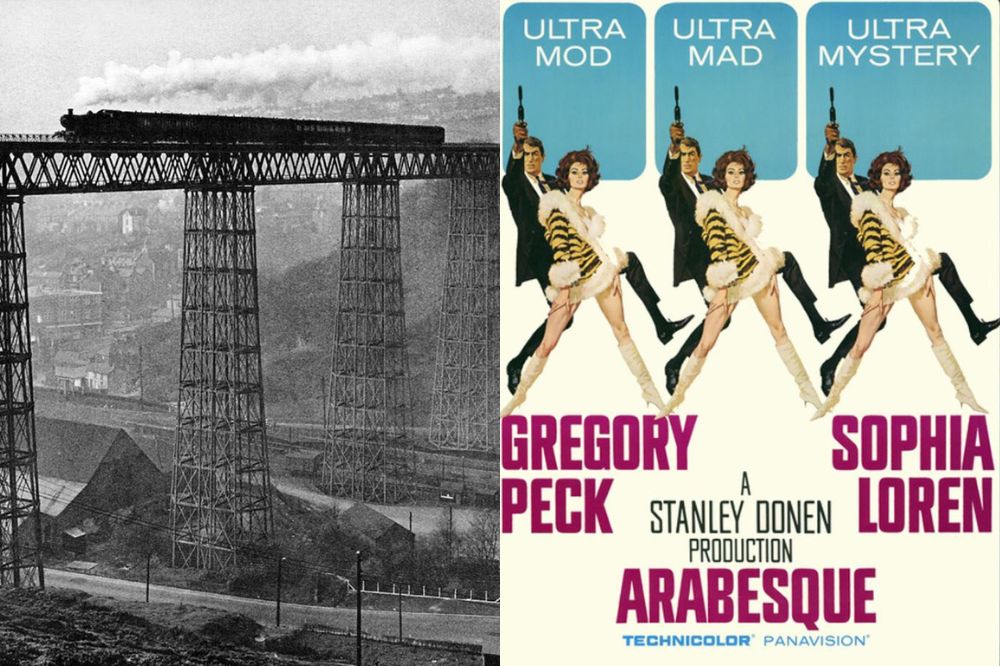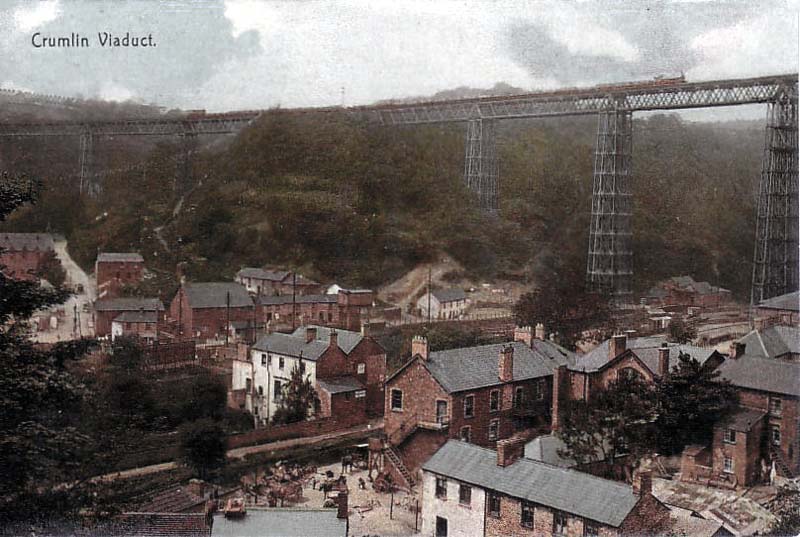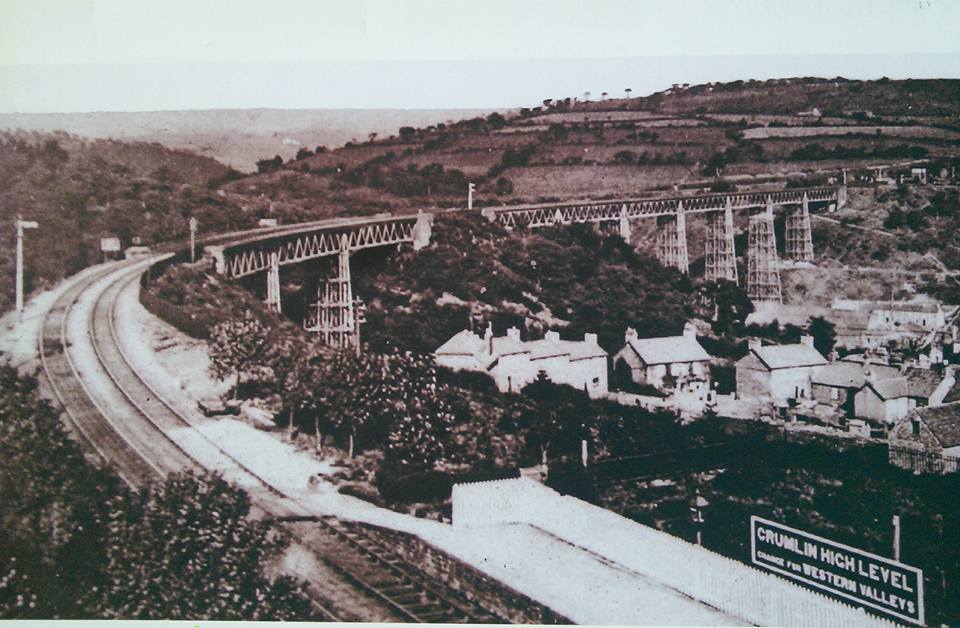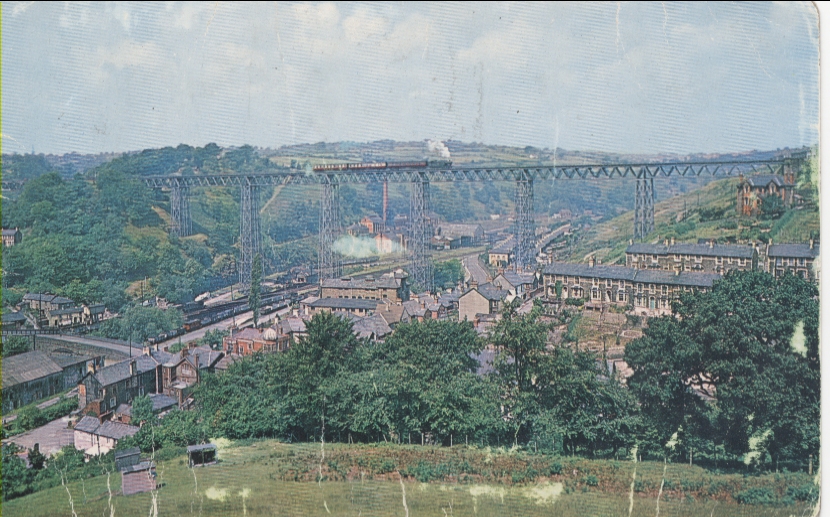Watch: A lost wonder of the Industrial Revolution made immortal by Hollywood

Stephen Price
A clip from a Hollywood classic starring Gregory Peck and Sophia Loren set on Crumlin Viaduct has resurfaced online – some sixty years since the closure of this ‘wonder of the Industrial Revolution’.
Crumlin Viaduct opened on 1 June 1857, and at the time was the tallest railway viaduct in Britain and the third tallest in the world.
Built to cross the Ebbw River, the viaduct was of international significance – regarded as a wonder of the industrial age and an extraordinary feat of Victorian engineering.
Black gold
The chief purpose of the viaduct was to transport coal during the extractive and deeply impactful Welsh ‘coal rush’.
To facilitate this entrepreneurial scramble in search of Wales’ abundant black gold, a railway line was required to join up the Taff Vale Railway in the west with the Newport, Abergavenny and Hereford Railway in the east.

The line came to be known as the Taff Vale Extension, and the British Parliament gave its approval.
The viaduct was famously called “one of the most significant examples of technological achievement during the Industrial Revolution”.
Innovation
Building the viaduct was no mean feat – with architects and engineers alike hotly debating how best solve the issue of traversing the long and high Ebbw Valley.
Initially, a stone bridge was touted but technical difficulties and the strong winds that hit this narrow, steep sided valley proved too great a risk. Building a bridge or viaduct made out of wrought iron was considered the right and proper, and most innovative, approach.
Two tender responses were received by August 1852, and the favoured design came from Scottish civil engineer Thomas W. Kennard for a viaduct of 10 iron trusses, supported by a number of high stone piers.
Kennard tested his design system at Blaenavon Ironworks, owned by his father, and subsequently the iron structures were cast at Kennard’s Falkirk Ironworks and shipped to Newport Docks.
Construction
In October 1853, Kennard began building the Crumlin Viaduct Works on the east bank of the Ebbw River.
From there, the castings from Falkirk were brought together with wrought iron from Blaenavon, and the fitting and fabrication began taking place.
In the summer of 1853, workers from Blaenavon and nearby villages set about the difficult and dangerous task of creating a viaduct that, upon completion, stood an impressive 200 feet high, and spanned the valley for 1650 feet.
Opening
The viaduct opened on Whit Monday, 1 June 1857 by Lady Isabella Fitzmaurice and its impact on the surrounding area was instantaneous.

In the forty years between 1860 and 1900, Thomas Kennard helped establish workmen’s homes, places of worship, a company school, shops, a hotel and a ‘mutual improvement society’ with a library and reading room.
Tory sleight of hand
In 1963, however, a British Railways Report by Dr Richard Beeching titled ‘The Reshaping of British Railways,’ proposed that many stopping passenger services should be discontinued and small stations closed.
This unpopular strategy, known as Beeching’s Axe, resulted in the loss of 67,700 jobs, the closure of a quarter of the country’s railway lines and the axing of 2,128 stations.
In June 1964, the last scheduled passenger train; the 21:10 from Pontypool to Treherbert; passed over the Crumlin Viaduct.
Without a passenger service, the future of the line as part of the regional rail network became questionable,and so no major investments were made on the line for a substantial period.
Beeching’s name alone is synonymous with the widespread axing of swathes of railway lines which still affect communities across the UK to this day.
Fight to save the bridge
Even at the time, Crumlin Viaduct’s importance was understood, and many within the community and from afar fought to save it.
In 1962, Crumlin Viaduct was scheduled as being of architectural and historical interest by the Ministry of Housing and Local Government.
But while the stone Hengoed Viaduct survived, a structural survey of Crumlin Viaduct showed its poor state, and the resultant need for high investment to secure its future.

The decision was therefore made to dismantle it. By then, housing had extended into the lower valley area, and some thought it too dangerous to keep this structure in place without due care and maintenance.
The iron parts of the bridge were completely dismantled by the end of 1967, but the stone and cast concrete abutments remain visible on the valley sides to this day.
Hollywood
Whilst demolition was in progress, Universal Studios famously used the viaduct to shoot scenes for ‘Arabesque’ – a tongue-in-cheek spy thriller starring Gregory Peck and Sophia Loren.
Directed by Stanley Donen, Arabesque was based on The Cipher, a 1961 novel by Alex Gordon (pseudonym of Gordon Cotler).
The feature was a box office success, with Boxoffice Magazine calling it: “A spy adventure par excellence” and wrote that it was “in the best Alfred Hitchcock vein and ranks among the year’s best.
The two stars were at the height of their fame, and their presence in the humble Welsh community was so out of the ordinary and unexpected that many residents still remember it to this day.
Cinema history
The chase scene has gone down in cinematic movie history, not only because of its unique setting, but also down to a mistake that unfortunately made the cut.
Eagle-eyed viewers might just spot a sign for ‘Birds of Swansea’.
This sign belonged to the group tasked with demolishing the bridge. And, another blooper that got missed during the cut was the unwelcome appearance of the second unit camera team.
In an episode of Vanished Wales, shown on ITV Wales in 2022, resident Keith Lloyd told the filming crew how he remembers it well.
He said: “Everybody was out cheering. We couldn’t believe it, seeing these two famous stars.
“They were the most down to earth people that you’d ever meet and they’d chat away to you like you were their next of kin.”
Support our Nation today
For the price of a cup of coffee a month you can help us create an independent, not-for-profit, national news service for the people of Wales, by the people of Wales.








This otherwise interesting and informative article is vitiated by the gratuitous phrase “much to the delight of the ruling Tory party”. The regrettable fact is that the Beeching cuts were seen at the time as the way forward for the British transport system. The Labour government which came into office just months after the last passenger train trundled across the Crumlin viaduct might have cancelled or reversed the closure programme, but chose not to. The closures continued through Labour’s period in office, which saw an end to services between Carmarthen and Aberystwyth, Caernarfon and Afon Wen, and Ruabon and Barmouth,… Read more »
Diolch Richard – appreciate the feedback (and error spot), I clumsily wanted to say how he’s taken all the credit/flak but it wasn’t just him going rogue with no mandate. And you’re right, no one came along and undid those actions – if only they would. There’s a beautiful video online of a steam train going through Clydach gorge on YouTube – oh to have that back open. Thanks again. Steve
Pontypool to Treherbert train, wow. Imagine multiple valley spanning public transport like that nowadays?
You can view where the old lines used to run on this site
https://www.railmaponline.com/UKIEMap.php